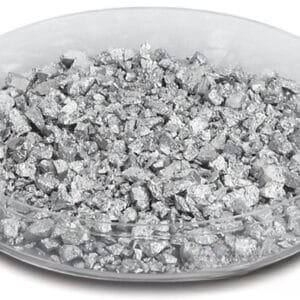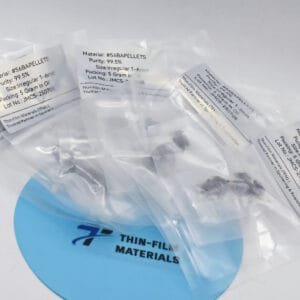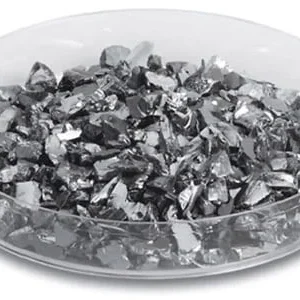Ytterbium Evaporation Materials Description
Ytterbium is a ductile, silvery-white metal with a relatively low crustal abundance of 0.000266%. It is primarily found in minerals like xenotime and black rare earth gold. Ytterbium has seven natural isotopes.
High-purity ytterbium evaporation materials are essential for achieving high-quality films in deposition processes. TFM specializes in producing ytterbium evaporation materials with up to 99.9% purity, supported by stringent quality assurance processes to ensure reliability.
Ytterbium Evaporation Materials Specification
| Material Type | Ytterbium, Yb |
| Atomic Number | 70 |
| Density | 6.90 g/cm3 (near r.t.) |
| Color/Appearance | Silvery White, Metallic |
| Thermal Conductivity | 34.9 W/m.K |
| Melting Point | 824 °C |
| Boiling Point | 1196 °C |
| Coefficient of Thermal Expansion | 26.3 x 10-6/K |
| Z Ratio | 1.13 |
| Synonyms | Ytterbium Pellets, Ytterbium Pieces, Ytterbium Evaporation Pellet, Yb Pellets, Yb Pieces, Yb Evaporation Pellet |
Ytterbium Evaporation Materials Applications
- Deposition Processes: Utilized in semiconductor deposition, chemical vapor deposition (CVD), and physical vapor deposition (PVD).
- Optics: Applied in wear protection, decorative coatings, and displays.
Ytterbium Evaporation Materials Packaging
Our ytterbium evaporation materials are carefully handled to prevent damage during storage and transportation, ensuring they retain their original quality.
Contact Us
TFM offers ytterbium evaporation materials in various forms, purities, sizes, and price ranges. We specialize in producing high-purity e-beam evaporation materials with optimal density and minimal average grain sizes. For current pricing on evaporation pellets and other deposition materials not listed, please contact us with your inquiry.


 MSDS File
MSDS File



Reviews
There are no reviews yet.